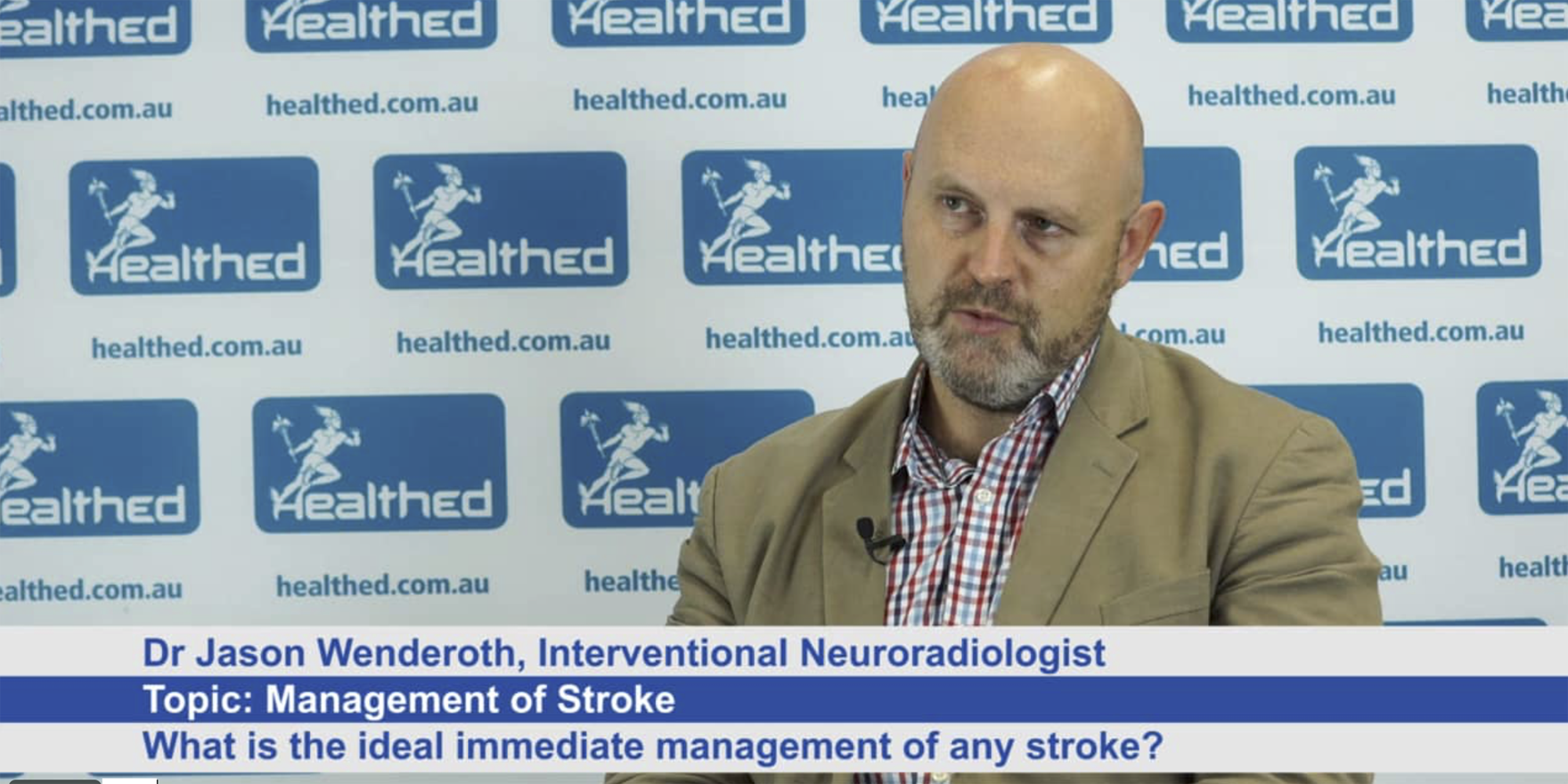Determining the severity of the stroke is the first step towards management, says Dr Jason Wenderoth
Determining the severity of the stroke is the first step towards management, says Dr Jason Wenderoth.
Ischaemic strokes are the most urgent, says Dr Jason Wenderoth, an interventional neuroradiologist in Sydney.
“It’s important to establish first whether clinically you think the patient has a large vessel occlusion or a stroke that is going to be disabling,” he says.
“There are several tools that are used by ambulance officers and emergency departments to determine that.”
If the stroke is believed to be severe, the patient should be evaluated rapidly with imaging.
“That means no delay at all in moving to the CT scanner to have a plain CT brain without contrast,” says Dr Wenderoth.
“If that’s normal and there are no signs of established ischemic infarction or haemorrhage, the patient should then have a CT angiogram immediately from the arch of the aorta right through to the top of the head.
“That is to say the patient should not return to emergency for further clinical evaluation or tests.
“The next important test is to do a CT angiogram to establish whether there is stenosis in one of the vessels in the neck and then further up into the head.”
This helps doctors assess whether the blockage in one of the arteries is either accessible or appropriate for thrombolysis or clot retrieval by endovascular techniques.
[media_embed] https://player.vimeo.com/video/236534974[/media_embed]


